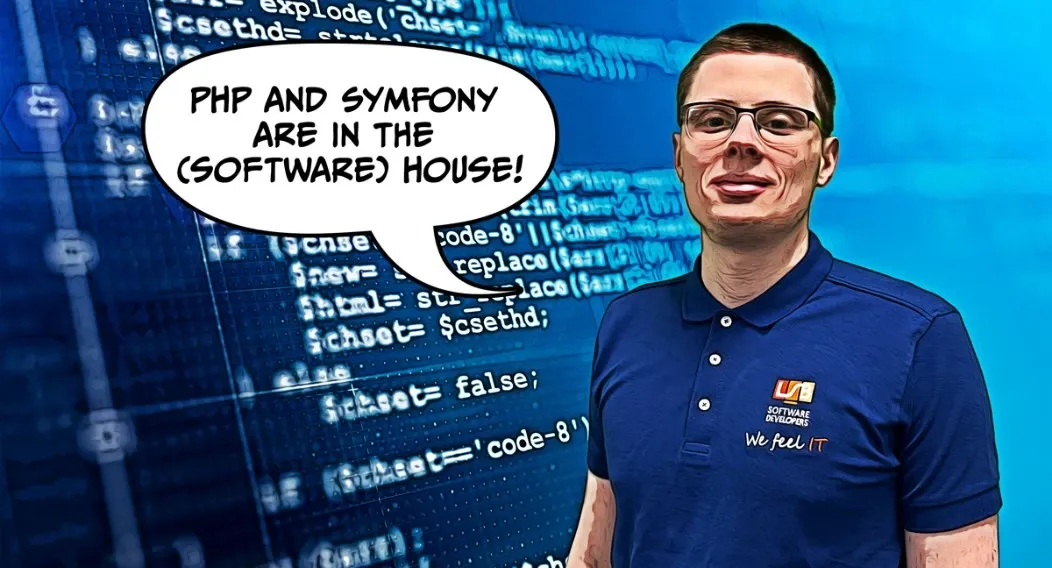The creators of websites and web applications have been using many technologies and programming languages for years. Some of them are just gaining ground, while others are slowly finding their way into the digital museum. However, in the world of so-called backend applications and code running on the server, there is a technology that has been in use for decades, which a few years ago caught a second breath, in the form of new versions and solutions. As the Internet far and wide, it has learned its advantages and disadvantages, and the next generations of programmers are still developing a great project called ... PHP.

PHP - 77% of servers can't be wrong
PHP is a general-purpose, server-side programming language. It is especially used to create dynamic websites and web applications. It was started under the name PHP / FI by Rasmus Lerdorf as early as 1994 as a set of website monitoring scripts, enlarged over time with form processing. After a few years, it experienced a revolution in the form of rewriting the source code, modularity support and increased efficiency. Each subsequent major release of PHP has been a milestone in providing new capabilities and improving performance and security. Nevertheless, for many years PHP has had a so-called low entry threshold, which translated into popularity and a large amount of low-quality code. Fortunately, this stage of PHP is over, and although many have announced its end over the years, everything indicates that it is here to stay. The history of the language is long and complex, but the most important thing for us is what PHP is today.
At the time of writing, the latest PHP version is 8.1.8. This open source technology fully supports, among others, object-oriented programming, and developers with its help can easily perform:
- user authorization,
- data validation and analysis,
- file operations,
- database connections,
- microservices and API
- image generating and processing
- data exchange between various systems and technologies
- providing clients (e.g. browsers) with a full set of data and views
According to Web Technology Surveys statistics this technology is used in over 77% of server-side applications. The numbers speak for themselves!
Need a modern website or other application?
Symfony - a modern framework with traditions
Symfony is a PHP framework that, like the language itself, has not been present in the world of web applications since yesterday. The first version was released in 2005, and since then the software has undergone many revolutions. The development and new possibilities of the PHP language were one of the driving forces for the creators and the Symfony community. The path from a simple library to a modern and efficient component-based framework is the story of successful open-source software. Today, Symfony 6 is an example of taking the opportunity of the possibilities offered by the PHP language itself and the community of the world of web applications.
LSB DATA development team have been using Symfony since its first stable version. Despite the common problems that early releases suffer from, they remained faithful to the SensioLabs framework. This decision turned out to be right because Symfony has been a leader among PHP frameworks for many years. Currently, the main advantages of using Symfony in web applications are:
- structure based on independent components
- flexibility
- efficiency
- use of the best design patterns
- largest community of developers in its class
- regular updates and continuous development
- tools supporting programming and error analysis
- rich documentation
The popularity and reputation of the Symfony framework translates into numerous extensions in the form of the so-called bundles, created by programmers from around the world.
Summary
Is the PHP - Symfony stack the only answer to the questions asked by modern web applications? Certainly not. The IT world doesn’t like the stagnation, new solutions are constantly being developed, but no technology is and will never be perfect. One of the most important steps in the first phase of a new project is the selection of appropriate tools and techniques. We are open to various solutions and we try not to limit ourselves in terms of the languages and frameworks we use. However, the history of our projects shows that both PHP and Symfony, especially in the most recent versions, live up to the hopes placed in them and facilitate the work of our team.
Have an idea? Let's talk